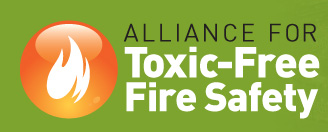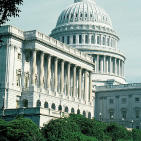  |
|||
The Toxic Substance Control ActTheoretically, all chemicals, including flame retardants, are regulated under the Toxic Substances Control Act of 1976 (TSCA). But numerous brominated flame retardants (BFRs) were grandfathered in and assumed to be safe under TSCA in 1976 along with roughly 60,000 other chemicals already in production. These chemicals received instant approval without testing to verify their safety for human health or the environment. And no future order for testing was required. Since 1976 scientists have found flame retardants in an incredible array of living things: in iconic marine mammals, birds of prey, domestic pets, men, women, teens, infants, toddlers, and newborns. Among the highest levels ever recorded in people were found among school children in California. Only Nicaraguan children living or working on hazardous waste sites have been found to have higher levels. Exposure to flame retardants has been associated with negative developmental effects, reproductive affects, cancer and thyroid problems. Yet TSCA provides no way to limit or ban these chemicals. Manufacturers have voluntarily stopped production of some flame retardants and 12 states have taken action to restrict their use. But TSCA remains moot on flame retardants that scientists agree may be hazardous to public health. New chemicals introduced to replace some of the worst ones that were subject to regulation, also get a pass under TSCA. Substitute flame retardants that replaced those banned in some US states and another slated for production stoppage in 2013 have received almost little scrutiny under TSCA. Upfront, independent, preproduction safety data is not required and the burden of proving harm falls to the EPA usually after chemicals have entered the marketplace. The bar set for proving hazard under TSCA is nearly impossible to clear. Companies are actually discouraged from testing their products. If they do test and find hazards, they are required to report those to EPA. But in the absence of testing, the chemical can be freely sold. Under TSCA, a company could go so far as to publicly claim their product is "green" without actually disclosing a list of its ingredients and proof of safety to health and the environment. TSCA must be reformed to require all chemicals be tested for safety and health as a condition for being allowed on the market. Efforts to reform the Toxic Substances Control Act of 1976 with these and other necessary changes are underway. Visit www.saferchemicals.org to learn more and to get involved. California Technical Bulletin 117 Bureau of Home Furnishings and Thermal InsulationCalifornia's obselete flammability standard called Technical Bulletin 117 has become the driving force for non-essential applications of chemical flame retardants throughout the US. The bulletin from the State of California Bureau of Home Furnishings and Thermal Insulation requires foam (usually petroleum-based) to withstand an open flame for 12 seconds without igniting. Recent data demonstrates that there are no proven fire safety benefits from current use of flame retardant chemicals to meet California's flammability standard. Adding these chemicals actually can make fires even more dangerous for firefighters and victims of fires because they produce higher levels of carbon monoxide, soot, and smoke in fires; the major causes of fire deaths. Health and environmental groups believe untested and toxic flame retardants do not belong in consumer products, especially those marketed to pregnant women, babies, and children. We deserve fire safety without these chemical ingredients. Companies should disclose what chemicals are in each product and how they make decisions about which chemicals are safe in products made for children. Until changes occur in federal law to require pre-production health and safety testing and California TB 117 is amended to exclude hazardous or untested flame retardants, companies can make safer, healthier product lines that are free of hazaardous flame retardants for the all of the 49 other U.S. states, where TB 117 does not apply. Visit www.psr-la.org/take-action. |
|||





